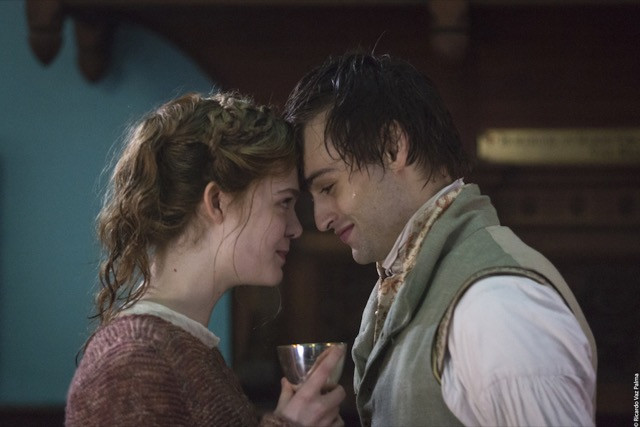Ostensibly a biopic of the author of “Frankenstein or The modern Prometheus”, Haifaa Al Mansour’s “Mary Shelley” has a strong feminist bent that will have audiences cheering its heroine, played by Elle Fanning, to the rafters.
The film focuses on Mary’s tempestuous relationship with the poet Percy Bysshe Shelley (Douglas Booth) and the process that led to the creation of one of the most iconic literary works of the last 200 years.
The director’s attempt to maintain a pacey enough film for modern audiences leaves her creating an episodic first half which has Mary dreaming of becoming a writer of ghost stories, arguing vehemently with her step-mother, being shipped off to Scotland by her father (Stephen Dillane) and meeting the beautiful and seductive Shelley.
When he pursues her back in London, the pair end up eloping, together with Mary’s half-sister Claire (Bel Powley). After a rollercoaster of misery and borrowed fortune, they end up at the Villa Diodati near Geneva as guests of Lord Byron (Tom Sturridge) and the unfortunate John Polidori (Ben Hardy).
The inclement weather famously leads to a ghost story competition as a form of entertainment, from which emerges Mary’s “Frankenstein” and Polidori’s “Vampyr”. Mary’s novel is hailed as a masterpiece by Shelley and Claire, and by her own father--though he is initially unaware that she is the true author as the book has been published anonymously, with a foreword by Shelley, after being almost universally rejected because the subject matter was not fit for a young woman.
Fanning carries the film with aplomb. Her Mary the right balance of fiery independence, when such things were frowned upon in a woman, and creative yearning. Booth is suitably dreamy as the free-spirited seducer, while Powley is vivaciously immature in her awe of the elder step-sister. But Sturridge’s performance veers dangerously into caricature and Joanne Froggatt (so good in “Downton Abbey”) is sadly flat as the step-mother. There is surely also a film in the tragic Polidori story, and Hardy gives the doomed writer an empathetic outing.
While the focus is on the turbulent dynamic between Mary and Shelley, which sometimes fails to feel as passionate as it should, it is the relationship between Mary and her father that is arguably the more interesting. Dillane is perfectly nuanced as the concerned, disappointed and ultimately proud father.
“Mary Shelley” is a sumptuous film that deserves to be seen at the cinema. The costumes, lighting and production design are exquisite--many of the interiors were shot in Luxembourg studios and designer Paki Smith has said the scenic painting work on the sets in Luxembourg was one of the best he has ever worked with.
